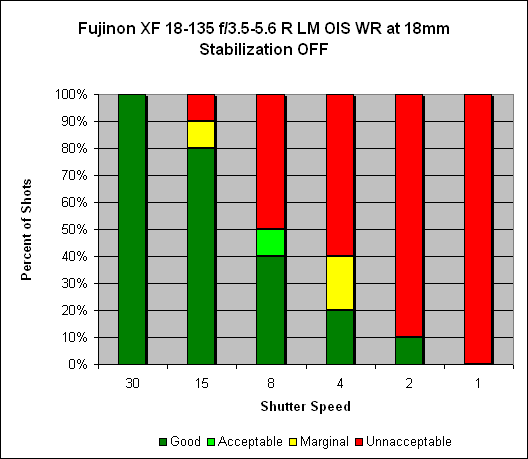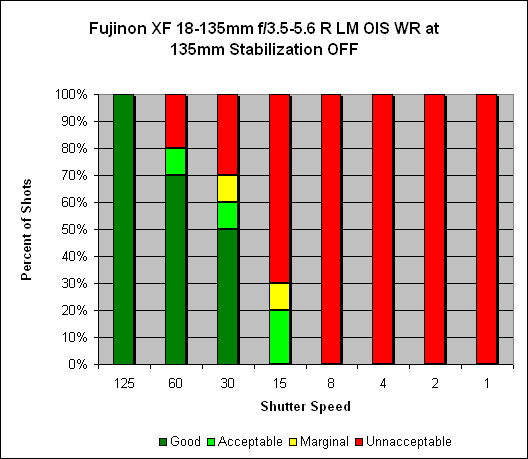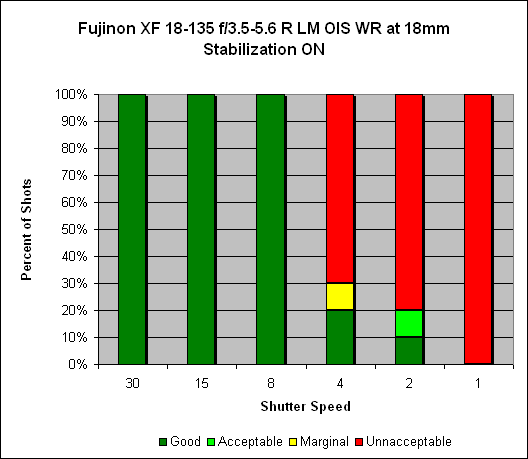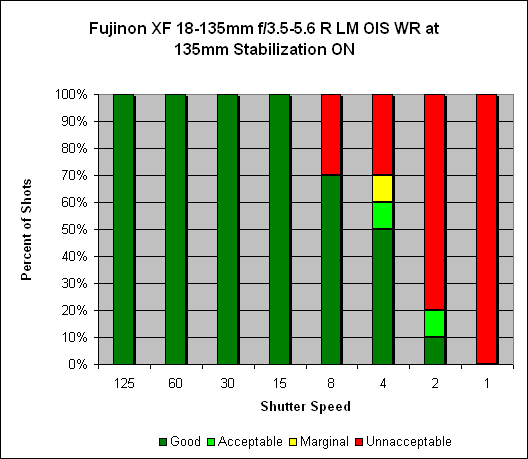Most people tend to think of image stabilization as being mainly for telephoto lenses. While it's true that their longer focal lengths tend to magnify the effects of camera shake, image stabilization can provde a very useful assist at wider angle focal lengths as well; anyone who's ever tried to blur the image of a waterfall, while keeping the surrounding landsape tack-sharp knows exactly what I'm talking about.
At 18mm, we don't see a huge amount of improvement - just a single stop of hand-holding performance. We see 80% of shots are sharp at the 1/15s shutter speed when OIS isn't active; this falls into line with the one-over-shutter speed rule of thumb. When OIS is engaged, we see 100% of shots are sharp at 1/8s; but there is essentially no improvement beyond that.
 |
| Mouse over this chart to show results with IS activated. |
Zoomed in to 135mm, we see better performance from this lens' OIS system. Hand-held without the system active, we see 100% of shots are sharp at 1/125s and worse results from there; when OIS is activated, we can shoot as slowly as 1/15s and still get 100% sharp images, even 60% sharp at 1/8s. Thus, we're satisfied to report about 3 1/2 stops of hand-held improvement.
 |
| Mouse over this chart to show results with IS activated. |
IS systems tend to provide more benefit to less-stable shooters than very steady ones, so most users will see the same or greater amounts of shake reduction as we measured here. You can read more about our IS test methodology here: SLRgear IS Test Methodology, v2.

